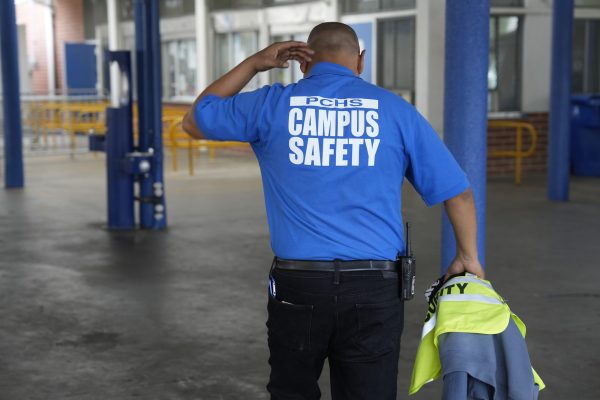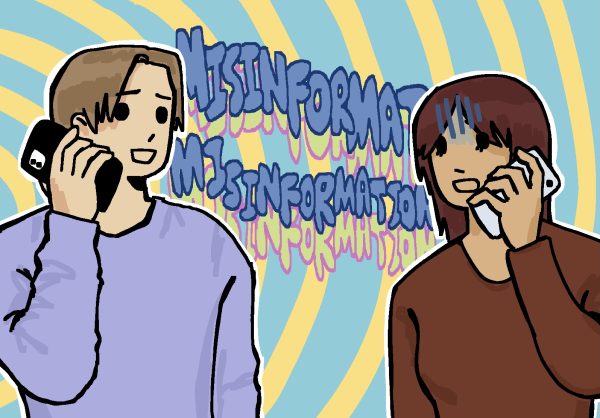Three Bank Failures Fuel Concerns about the U.S. Economy
Three regional banks, Silicon Valley Bank (SVB), Signature Bank and First Republic Bank (FRB), failed this year, sparking concerns over what many consider to be an imminent financial crisis.
In recent years, many U.S. banks including SVB heavily invested in U.S. Treasury bonds due to their low interest rates. However, as the Federal Reserve (Fed) raised interest rates to combat inflation, decreasing bond prices caused banks like SVB to suffer major losses.
According to the Federal Deposit Insurance Corporation (FDIC), SVB’s $21 billion sale of its Treasury bond portfolio at a $1.8 billion loss on March 8 led to concerns among its depositors about the safety of their money. The sharp dip in consumer confidence resulted in a bank run as depositors scrambled to withdraw their cash. SVB’s stock plunged by 60 percent the next day.
“Silicon Valley Bank made some bad investments,” said Kathryn Pawlik, Pali’s AP Macroeconomics teacher. “When knowledge of their balance sheets became public or semi-public, it led to a bank run and, of course, they didn’t have enough money to cover all their deposits all at once and had to shut down.”
In the next five days, two more banks failed. According to Bloomberg, Signature Bank’s failure resulted from large investments in the cryptocurrency market, which has been unstable since the collapse of FTX in 2022. First Republic Bank’s (FRB) collapse also resulted from a bank run in which depositors withdrew $100 billion by the end of March.
Federal regulators stepped in quickly in order to prevent the three failures from causing a global contagion. In a joint statement on March 12, the U.S. Treasury, Fed and FDIC announced that they would take the necessary measures to ensure all deposits would be honored. The Fed, Bank of Canada, Bank of England, Bank of Japan, European Central Bank and Swiss National Bank provided liquidity for the failed banks.
“The federal government made the right decision to work things out quickly to make sure that depositors were going to be made whole,” Pawlik said. “If they hadn’t done that, this could have spread very quickly throughout the banking industry and turned into a much larger crisis.”
The FDIC seized control of the banks and entered a purchase agreement on March 23 in which First Citizens Bank & Trust Company assumed responsibility for all of SVB’s deposits and loans. The FDIC entered a similar agreement between Signature Bank and Flagstar on March 19, while FRB was sold to JPMorgan Chase on May 1. JPMorgan Chase will reopen 84 FRB offices under its own brand and depositors will now be JPMorgan Chase customers.
“Bailing them out was a good idea because if one bank fails, then you have the possibility of hundreds of banks failing,” said Ryan Levi, president of Pali Stock Investors Club. “SVB was the 16th largest bank in the U.S., so their collapse isn’t something we should just sweep under the rug.”
“The U.S. government needed to intervene and there should also be greater transparency in terms of what types of investments banks make,” Levi added. “When banks turn to alternative investments like cryptocurrency, the public needs to know.”
According to the FDIC, the failures of FRB, SVB and Signature Bank represent the second-, third- and fourth-largest bank failures respectively in U.S. history after the collapse of Washington Mutual in 2008. The failures also led to concerns among both consumers and financial experts over whether other regional banks are vulnerable.
“The failures impacted consumer confidence,” Pawlik said. “The federal government did a lot in recent weeks to assure depositors that their money will be there so that we don’t have a ripple effect where people take their money out of more banks, which would lead to more bank failures. That would cause further consolidation in the banking industry and cause people to put their money in the big five banks… [and] that would eliminate regional banks, which offer their own benefits.”
Small to mid-sized regional banks, including minority banks, generally serve smaller businesses. According to the Independent Community Bankers of America, they provide local knowledge and a more personal relationship to their clientele, with the goal of helping them better succeed.
“There’s value in having smaller banks, local banks [and] more regional banks because they can cater to their particular population better and have policies that benefit that population,” Pawlick said.
When asked whether the failures could be indicative of a global economic recession, Pawlick said that “the problems that Silicon Valley Bank experienced were fairly unique to them because of what they are as an institution and some investment choices that they made.”
She added: “I don’t think these failures indicate other larger issues with the economy. That said, there could still be a recession, but I just don’t think the two are closely related.”
Levi also remains optimistic.
“The failures happened about a month ago, and we really haven’t seen any crazy economic downturn,” he said. “On the first day, $42 billion was withdrawn from Silicon Valley Bank, and there was a $465 billion loss in their financial stocks, but it’s just been a blip in the economy. I think the U.S. can recover with the proper intervention and by regulating the market properly.”
At the same time, Levi offers some cautionary advice for students looking to set up their own bank accounts.
“You should definitely know the type of investments and risks a bank carries,” he said. “Make sure the bank you’re putting your money into is reliable and FDIC insured so your money is protected in case of a bank failure. Also, the larger the bank, the harder it is to fail while smaller banks with fewer regulations and more alternative ways of investing are riskier.”

Nico Troedsson, a junior, is excited about contributing to Tideline for a third consecutive year, this time as a features editor. His passion for journalism...

Maddie Kelly is a senior and first-year illustrator for Tideline. Currently, she is a member of Pali's soccer and lacrosse teams, and she works at a boba...










